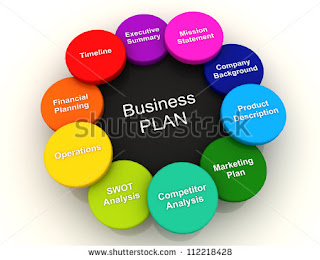Post No.
24. Business Plans
A Business
plan is a simple official document that describes a business project. It’s
importance is fundamental because it is a tool that demonstrate the body of business
as the goals of the business, are factors involved that must prove not only
profitability in the short, medium and long term but also strategic plans and
administration. There are many factors involved as financial, management,
resources, profitability and a credible market research among others. An ‘elevator
pitch’ and a pitch deck are essential as part of the oral demonstration. This
oral demonstration should be accompanied with graphics, projections, and plans
in order to attract the attention of potential investors, clients or partners.
An analogy corresponds to the preparation of a skyscraper,
that is, from the bases, materials, Management, projections, technical designs,
costs, human personnel and others. Has to be a short document and easy to read
and easy to understand even for people who do not know about business and the
shareholders.
Below I detail more important elements of a business plan.
A business plan is a formal statement of Business
goals, reasons they are attainable, and plans for reaching them. It may also
contain background information about the organization or team attempting to
reach those goals. They may target changes in perception and branding by the
customer, client, taxpayer, or larger community. When the existing business is
to assume a major change or when planning a new venture, a 3 to 5 year business
plan is required, since investors will look for their investment return in that
frame.
Business plans may be internally or externally
focused. Externally focused plans target goals that are important to external
stakeholders, particularly financial stakeholders. They typically have detailed
information about the organization or team attempting to reach the goals. With
for-profit entities, external stakeholders include investors and customers.
Internally focused business plans target
intermediate goals required to reach the external goals. They may cover the
development of a new product, a new service, a new IT system, a restructuring
of finance, the refurbishing of a factory or a restructuring of the
organization. An internal business plan is often developed in conjunction with
a balanced scorecard or a list of critical success factors. This allows success
of the plan to be measured using on-financial measures. Business plans that
identify and target internal goals, but provide only general guidance on how
they will be met are called strategic plans.
Business plans are decision-making tools. The
content and format of the business plan is determined by the goals and
audience. A business plan for a project requiring equity financing will need to
explain why current resources, upcoming growth opportunities, and sustainable
competitive advantage will lead to a high exit valuation.
Preparing a business plan draws on a wide
range of knowledge from many different business disciplines: finance, human
resource management, intellectual property management, supply chain management
(the management of the flow of goods and services, involves the movement and
storage of raw materials, of work-in-process inventory, and of finished goods
from point of origin to point of consumption.), operation management, and
marketing, among others.
An ‘elevator pitch’ (short sales pitch {line
of talk that attempts to persuade someone or something, with a planned sales
presentation strategy of a product or service designed to initiate and close a
sale of the product or service}, that is a summary used to quickly and simply
define a process, product, service, organization, or event at its value
proposition [promise of value to be delivered, communicated, and acknowledge. It
is also a belief from the customer about how value (benefit) will be delivered,
experienced and acquired.])
A ‘pitch deck’ is a slide show and oral
presentation that is meant to trigger discussion and interest potential
investors in reading the written presentation. The content of the presentation
is usually limited to the executive summary and a few key graphs showing
financial trends and key decision making benchmarks.
An internal operational plan is a detailed
plan describing planning details that are needed by management but may not be
of interest to external stakeholders. Such plans have a somewhat higher degree
of candor and informality than the version targeted at external stakeholders
and others.
Typical structure for a business plan for a
startup venture:
Typical questions addressed by a business plan
for a start up venture:
Costs and revenue estimates are central to any
business plan for deciding the viability of the planned venture. But costs are
often underestimated and revenues overestimated resulting in later cost
overruns, revenue shortfalls, and possibly non-viability.
An externally targeted business plan should
list all legal concerns and financial liabilities that might negatively affect
investors. Depending on the amount of funds being raised and the audience to
whom the plan is presented, failure to do this may have severe legal
consequences.
Non disclosure agreements with third parties,
non-compete agreements, conflict of interest, privacy concerns, and the
protection of one’s trade secrets may severely limit the audience to which one
might show the business plan. Alternatively, they may require each party
receiving the business plan to sign a contract accepting special clauses and
conditions. (Wikipedia)
References:
How to build a business plan:
How to Write a Business Plan[Updated for
2018]:
Business Plan: A Step – by – Step Guide:
Business plans:
Business Plan Template for a Startup Business.
Score:
Business Plan Powerpoint Presentation. Time: 10:11:
How to Write Business Plan in 5 Minutes. Time:
5:47:




Comments
Post a Comment